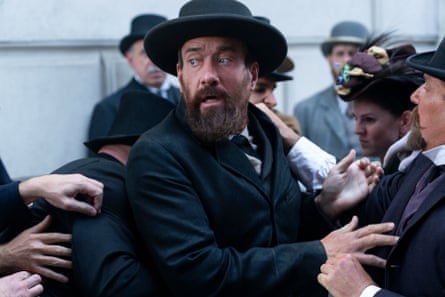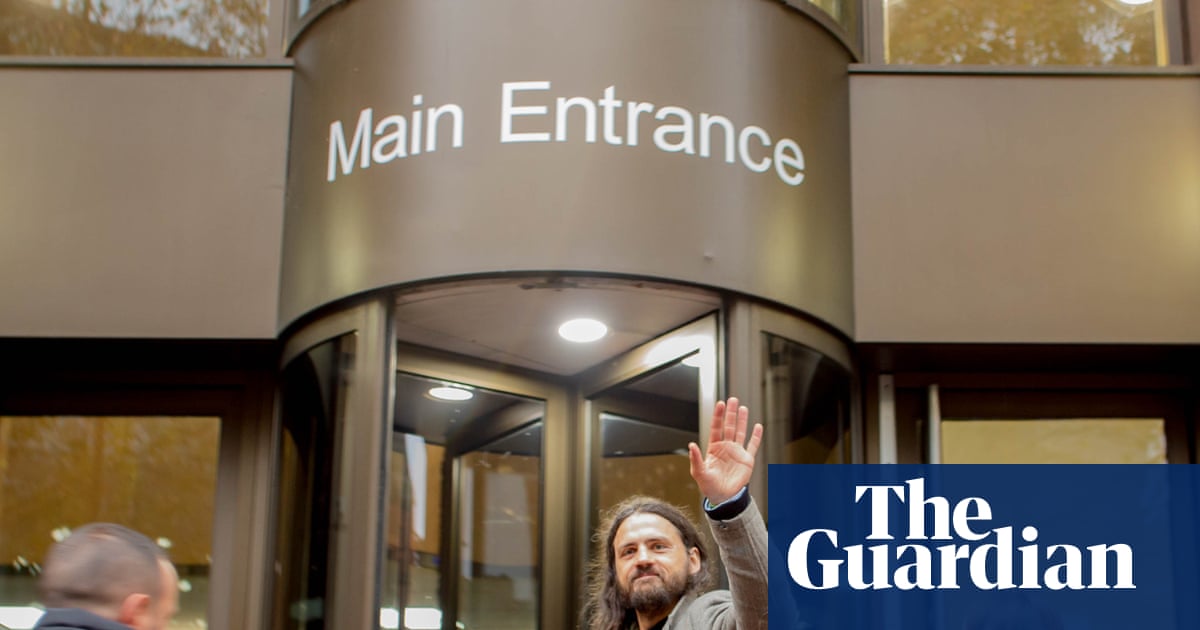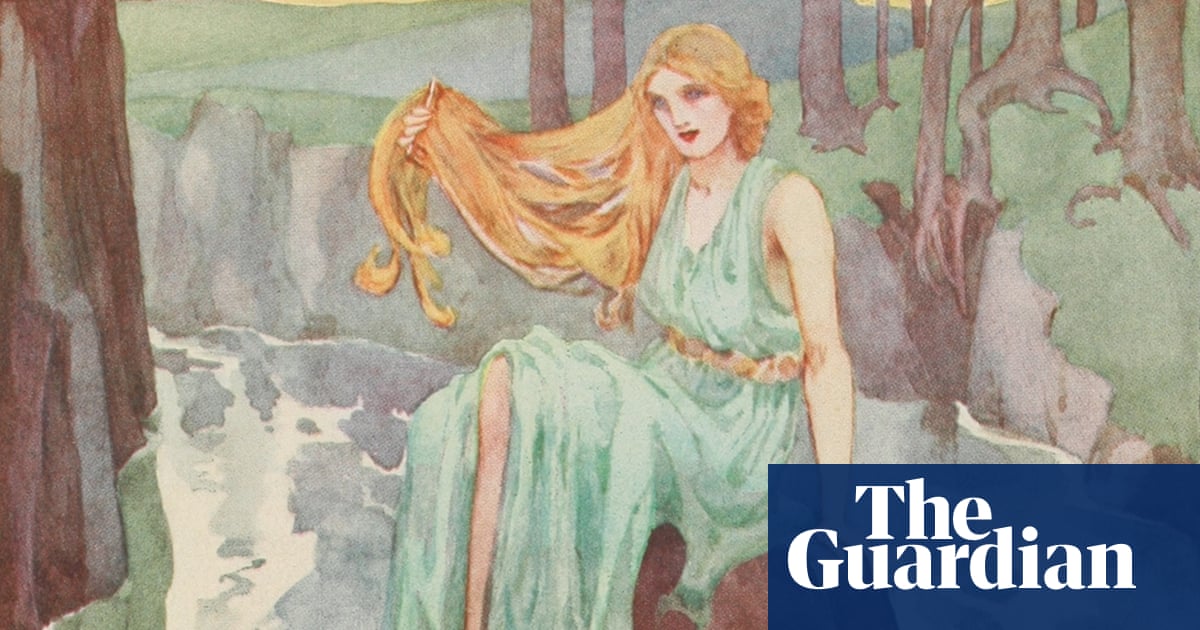The descendants of James Garfield, the 20th US president, were proud of his life but rarely spoke of his death. “We knew what had happened, that he was shot in a train station,” says James Garfield III, his great-great-great grandson. “We read about the story in books but, in one way or another, we just glanced over it.”
That changed in 2011 with the publication of Destiny of the Republic: A Tale of Madness, Medicine and the Murder of a President, a book by Candice Millard that revived interest in Garfield’s unfinished life. Her work has now inspired a Netflix drama, Death by Lightning, starring Michael Shannon as the president and Matthew Macfadyen as the drifter who gunned him down.
The series promises to shine a light on Garfield, who rose from poverty to the presidency in the Gilded Age only to fall victim to its toxic political divisions. His tenure was cut short after only 200 days not only by the assassin’s bullet but by medical malpractice – an event now forgotten as surely as the killings of Abraham Lincoln and John F Kennedy continue to fascinate.
That tragedy set the table for one of US history’s great “what ifs” with Garfield’s lost potential felt most acutely in the area of civil rights, where his commitment to equality for African Americans might have altered the nation’s post-Reconstruction trajectory.
James Garfield III, 58, an athletic trainer and professor from Cleveland, Ohio, adds: “You can’t help but be proud of what he did. He was like a multi-threat: he was a lawyer, he was a preacher, he was a farmer. He was all of these things which also shaped who he was and how he was and everything that we know about him the family carries down with us.”
Garfield was the last president born in a log cabin, in Cuyahoga County, Ohio, in 1831. His father died when he was 18 months old, leaving his mother, Eliza, to raise five children in difficult circumstances. An insatiable reader, Garfield worked on canal boats to earn money for an education.
He studied law, was ordained as minister, became president of Hiram College in Ohio and was a state senator. In 1858 he married a former classmate, Lucretia Rudolph, with whom he would have seven children. An ardent Unionist, Garfield viewed the civil war as a holy crusade against slavery and advanced to the rank of major general.
Speaking via Zoom, Millard says: “When I started researching him, I couldn’t believe it. He was absolutely brilliant. He was incredibly brave. He was very progressive for the time. He was kind. He was a decent human being and would have been one of our great presidents had he lived.”
Garfield was persuaded by Lincoln to resign his military commission when he was elected to the House of Representatives, where he would serve as a Republican for 17 years. He was strong supporter of black suffrage, viewing it as a matter of justice and the fulfillment of a wartime covenant.
Millard continues: “The speech he gave on the floor of Congress will tear your heart out. He was an incredibly powerful orator and this issue was very important to him.
“He wrote an original proof of the Pythagorean theorem while he was in Congress. He was this incredible classicist; he spoke Latin and Greek and knew huge length of the Aeneid by heart in Latin. He was an extraordinary mind.”
At the 1880 Republican national convention in Chicago the party was deeply divided between the “Stalwarts”, led by Senator Roscoe Conkling, who supported a third term for Ulysses S Grant, and the “Half-Breeds”, who supported James G Blaine. Garfield attended as a supporter of his friend and fellow Ohioan John Sherman.
When the 15,000-person convention was deadlocked between Grant and Blaine, delegates began looking for a compromise. Garfield’s impassioned speech nominating Sherman impressed them. During the speech, he reportedly shouted, “And now, gentlemen of the convention, what do we want?” to which a voice from the crowd unexpectedly replied: “We want Garfield!”
On the 36th ballot, a stampede of delegates made Garfield the surprise nominee. To placate the Stalwart faction, Chester Arthur, a Conkling loyalist from New York, was chosen as his running mate. In the general election Garfield defeated the Democratic nominee to become the only sitting member of the House ever to be elected president.
Millard says: “What would have made Garfield great and what is extremely rare and maybe unique to the American presidency is he didn’t want the job. It’s not that he had never thought about it but he was thrust into it.
“He used to call it presidential fever because he would watch people he admired change drastically because they wanted the office so much that they were willing to give up their own values, set aside their own morals in order to get this position, and he was never willing to do that.”
She adds: “When he found himself president, he was in this uniquely powerful position because he didn’t owe anyone anything, which never happens. To degrees people lose a little bit of themselves along the way and he didn’t because he wasn’t hungering for it. He was like, well, there’s some good I want to do and here I am so I can do it. Then unfortunately he didn’t have the chance to.”

The defining conflict of Garfield’s short presidency was his confrontation with Conkling over the “spoils system”. Conkling demanded control over federal patronage in New York, particularly the powerful and lucrative post of collector of the Port of New York. Garfield refused, stating the issue was “whether the president is registering clerk of the senate or the executive of the United States”. He nominated a political foe of Conkling to the post.
The confrontation escalated into a public battle but Garfield outmaneuvered Conkling in the Senate. Facing a humiliating public defeat, Conkling and his junior senator resigned their seats in protest. The next day, Garfield’s nominee was confirmed. It was a landmark victory for the power of the presidency over the party machine and for the cause of reform over “boss rule”.
But even as Garfield battled the titans of his party, he was being stalked by a disturbed and delusional man who embodied the dark side of the patronage system. Charles Guiteau was a drifter with a history of professional failures, mental instability and physical and psychological abuse in his childhood. He had failed as a lawyer, bill collector, preacher and member of the Oneida free-love commune.
Millard explains: “He was mentally ill and his particular brand of madness was delusion. He always believed that God had chosen him for greatness. He actually had financially a better start than Garfield but where Garfield achieved and rose, Guiteau failed at everything.
“He tried to be a lawyer and failed; he tried to be a journalist and failed; he tried a free love commune and they nicknamed him ‘Charles Get Out’. He was the only one not able to partake in what they had to offer at the free love commune, partly because he refused to do any manual labor. He thought it was beneath him.”
But Guiteau believed he had finally found a pathway to success: politics. Swept up in the drama of the 1880 election, he wrote and delivered an insignificant speech, “Garfield against Hancock”, and became convinced in his own mind that he was single-handedly responsible for Garfield’s victory.
Under this logic, Guiteau reckoned he had earned a high-level government job. He travelled to Washington and relentlessly pestered Garfield, Blaine and other officials, demanding to be made the US consul in Paris — a post for which he had zero qualifications. He became such a nuisance that he was eventually banned from the White House.
As he followed the dramatic Garfield-Conkling feud in the newspapers, Guiteau’s rejection curdled into a fanatical delusion. As he later described it, he woke one night with an “epiphany” he believed was a message from God: if Garfield were removed, the party’s internal conflict would be solved and he would be hailed as a hero.
On 2 July 1881, just four months into his presidency, Garfield was leaving Washington for his college reunion. As he walked through the Baltimore & Potomac Railroad station, Guiteau stepped from the shadows, pulled an ivory-handled British Bull Dog revolver from his coat pocket and shot the president twice in the back.

Garfield cried out: “My God, what is this?” and collapsed on the station floor. When a police officer seized Guiteau, he declared: “I did it and I will go to jail for it. I am a Stalwart and Arthur will be president.”
One bullet had grazed Garfield’s arm; the other lodged behind his pancreas. Modern medical historians agree that the wound was not mortal. Had Garfield been left alone, he likely would have survived, as many civil war soldiers did with similar injuries. However, what followed was a catastrophic case of medical malpractice.
Millard laments: “Can you imagine a more germ infested environment than the floor of a train station? That’s where he fell and was immediately examined. People were coming off the streets where there was horse manure everywhere, inserting their fingers in his back, putting him in this horse hair and hay mattress.
“At that time, the hospitals were so bad, you only went there to die so they took him to the White House, but the White House itself was falling apart at that point. It was rat infested.”
A doctor with a controversial past named Dr Doctor Willard Bliss (confusingly, his first name was Doctor) took charge of Garfield’s care. He repeatedly probed Garfield’s wound with unsterilised fingers and instruments, introducing massive infection. He invited Alexander Graham Bell, inventor of the telephone, to find the bullet with his self-designed metal detector but without success.
Millard says: “Bliss saw in this national and personal tragedy an opportunity for personal fame and achievement. He was very worried about taking what he thought were risks with the the new fangled medicine, including sterilising and cleaning antiseptic.
For 79 days Garfield suffered immensely as the infection spread, developing sepsis and blood poisoning. He lost nearly a hundred pounds, becoming a skeletal figure. One of the last things he wrote was “strangulatus pro republica”, or “tortured for the republic”.
Despite the president’s obvious decline, Bliss issued rosy reports to the press, driven by what historians describe as immense hubris. On 19 September Garfield finally succumbed to the infection his doctors had caused.
Millard adds: “It was the most horrific death you can imagine. He was riddled with infection and, when they did the autopsy, there were huge gouges. The fingers had created these burrowing holes through him and they were filled with pus and infection. He lost so much weight and was horribly dehydrated. He almost certainly would have survived had it not been for his doctors.”
As for Guiteau, he pronounced himself the happiest he had ever been because he was now a celebrity. Millard says: “He’s doing every interview he can. He’s having his portrait taken. He’s polishing off his memoirs that he had written before.
“He writes a letter for the New York Herald to publish offering himself to any young woman who would like to marry him but she has to be younger than 30 and wealthy. He thinks he’s quite a catch now and he’s waiting for Arthur, whom he assumes is very grateful to him, to free him and then he expects to run for president himself.”
Guiteau’s trial was a spectacle. His defence lawyers argued he was not guilty by reason of insanity and, more pointedly, that the president’s doctors, not Guiteau, were responsible for Garfield’s death. Both defences failed. Guiteau was convicted and hanged, his brain and enlarged spleen preserved by a museum.

The nation feared that Arthur, the ultimate machine politician, would entrench the spoils system. Instead, rising to the gravity of the office, he became an unexpected champion of reform. In 1883 he signed the Pendleton Civil Service Reform Act, which established a merit-based system for federal employment and stands as Garfield’s most direct legacy.
Garfield was the second of four US presidents who have been assassinated. The shootings of Lincoln and Kennedy have spawned countless books and conspiracy theories; those of Garfield and, in 1901, William McKinley are little remembered. It was not until 2018 that a marker was erected on the National Mall close to the spot where Garfield was shot.
Millard hopes that Death by Lightning will inspire fresh curiosity or renewed interest, especially among young people, and impress on viewers what America lost. She visited the set in Budapest, Hungary, during filming and is thrilled by the finished product. She credits Mike Makowsky, its creator, writer and executive producer, for doing his own research and offering a faithful portrayal of Garfield.
“When we were talking early on six years ago, I told him I understand you’re going to take some creative licence and that’s fine. The one thing I really care about is Garfield’s character. It needs to stay intact because not only do people not know much about him; think there’s nothing interesting to know. You can’t understand the weight of this tragedy unless you understand who he was. Mike succeeded spectacularly with that. You understand who Garfield was.”
Speaking via Zoom from Los Angeles, Makowsky says: “Garfield was truly a Renaissance man. He was fiercely intelligent and empathetic and was so ahead of his time on the prevailing questions around civil rights and reforms within his own government.
“He believed in universal education at a time where that was not at all a popular notion. He exhibited genuine leadership and I hope that the show is able to successfully make the case for Garfield as one of the great tragic what-could-have-beens in our history. I can only speculate the positive effects that a full Garfield presidency would have had on our country.”
-
Death by Lightning is now available on Netflix

 2 hours ago
4
2 hours ago
4

















































